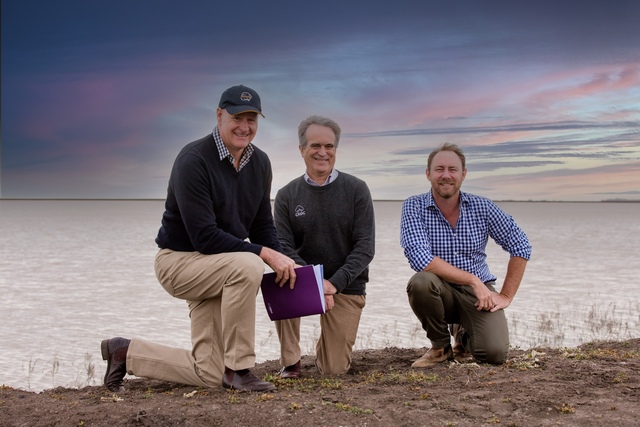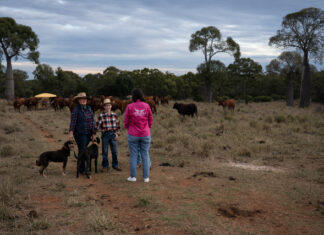
Floating solar panels on farm dams could revolutionise irrigated agriculture by alleviating evaporation and generating energy.
In a bid to solve some of the cotton industry’s biggest challenges – optimising water retention in the face of a hotter, drier climate and reducing carbon emissions through the generation of clean energy – the groundbreaking research could save Australian cotton growers water and money, boost productivity and set a crucial new industry environmental and sustainability standard.
It is a win-win, Australian-first project.
Nearly half of water storage volume is lost each year to evaporation and relocating just half of the current 16.6GW grounded solar panels to water storages could save 296GL of water a year, equivalent to more than 118,000 Olympic-sized swimming pools.
Simultaneously, it would generate vast quantities of energy.
The research project – spearheaded by Ag Econ with support from the Cotton Research and Development Corporation (CRDC) – will test the feasibility of installing floating solar photovoltaic (FPV) panels on irrigation storages to mitigate evaporation and create energy.
The $13 million project, called the ‘Novel Energy and Evaporative Storage Technologies for Irrigators’ (NEESTI) secured $6 million in funding under the federal government’s $5 billion Future Drought Fund’s Resilient Landscapes program.
Previous CRDC-supported research has found that managing evaporative losses from on-farm storages would “greatly improve“ cotton’s water productivity.
However, finding a practical solution is something the industry has been grappling with for decades.
The water saved via the FVPs could be used for additional crop production, domestic needs during droughts, water trading or water for the environment.
The project comes as agricultural supply chains face increasing pressure to lower emissions to meet national and sector-wide targets, which CRDC is prioritising through its Clever Cotton Strategic Plan and cotton’s industry-wide PLANET. PEOPLE. PADDOCK. Sustainability Framework.
Ag Econ principal climate analyst and economist Jon Welsh said the project addressed the critical issue of mitigating evaporation loss, improving drought resilience through improved water management and renewable energy generation that producers could actually offset or create income from, made possible through Virtual Energy Networks (VENs).
“This project investigates a practical, sensible and proven solution to store valuable water for longer, building resilience into an irrigated farming system that is then able to produce more food and fibre,” said Mr Welsh of Guyra on the NSW Northern Tablelands.
“Australia faces a critical trilemma of securing water, food and clean energy. Incorporating floating FPV on storage dams will help address all of those challenges simultaneously.“
In addition to Ag Econ and CRDC, the project also involves research partners the University of Southern Queensland and Macquarie University.
They will work across a number of agricultural industries outside of cotton, including grains, sugarcane, pecans and rice.
“We know FPV projects can work but there are serious challenges and a critical research gap remains – and that is how to develop a practical and cost-effective solution ready for farm rollout,“ Mr Welsh said.
“The project research will deliver technical, economic, policy and legal research to create a long-term and sustainable Australian FPV market for cotton and other irrigators.”
While the Australian cotton industry has improved its water use efficiency by almost 50pc since1997, the most significant loss of on-farm water is the evaporation from on-farm storages.
CRDC senior innovation broker Susan Maas of Emerald said this research built on the significant gains Australian cotton had already achieved.
“The Australian cotton industry has made huge gains in water use efficiency over the past 30 years, driven by research, development and extension,“ she said.
“Today, we are one of the most water-efficient cotton-producing countries in the world.
“There are still improvements to be made, which is why we continue to invest in this crucial area of research. Mitigating evaporation losses is a huge unrealised opportunity for the industry and the environment.
“This project could be a game changer for our industry, local domestic storages and other irrigation industries by enhancing our resilience, productivity and sustainability in a changing climate.”






